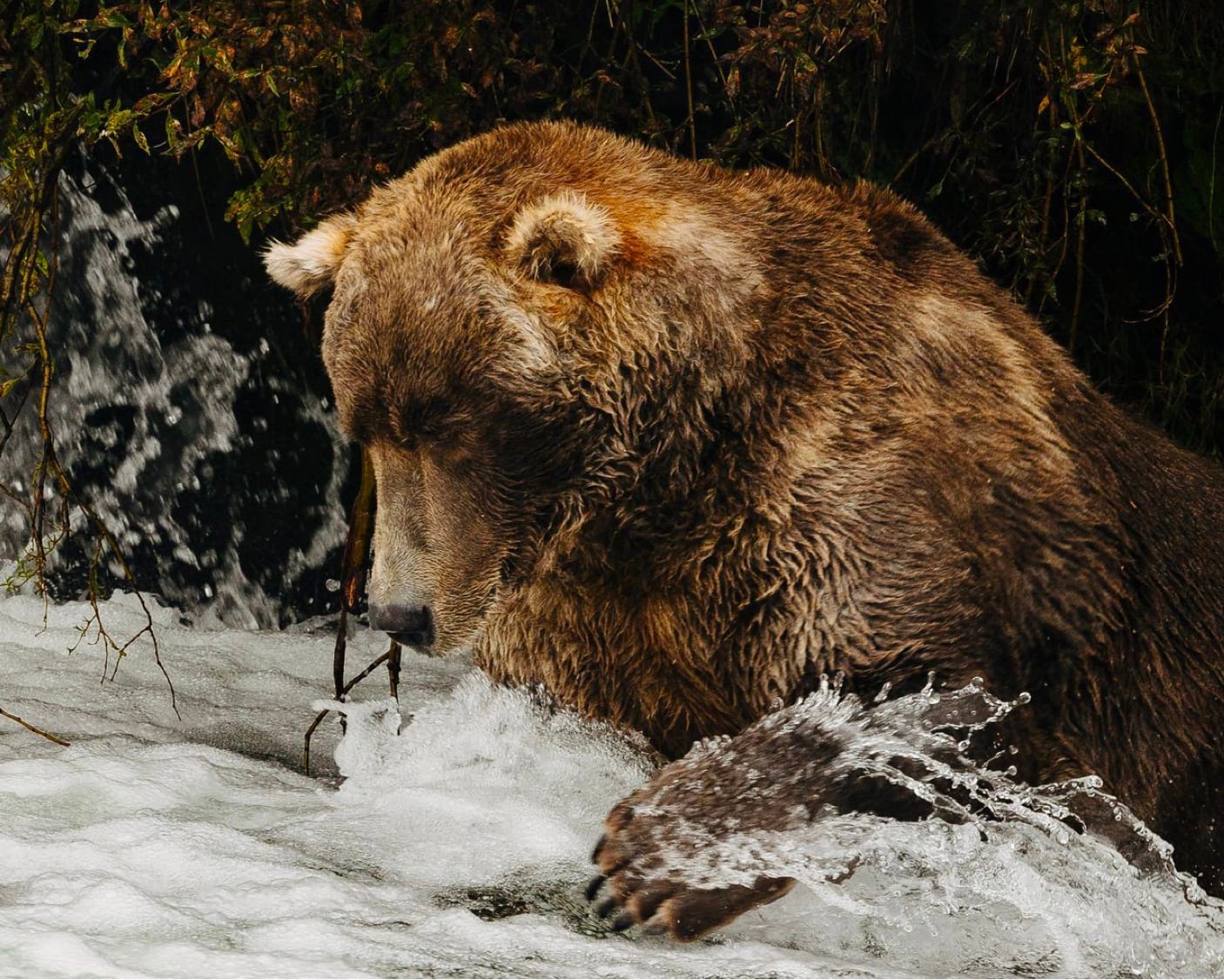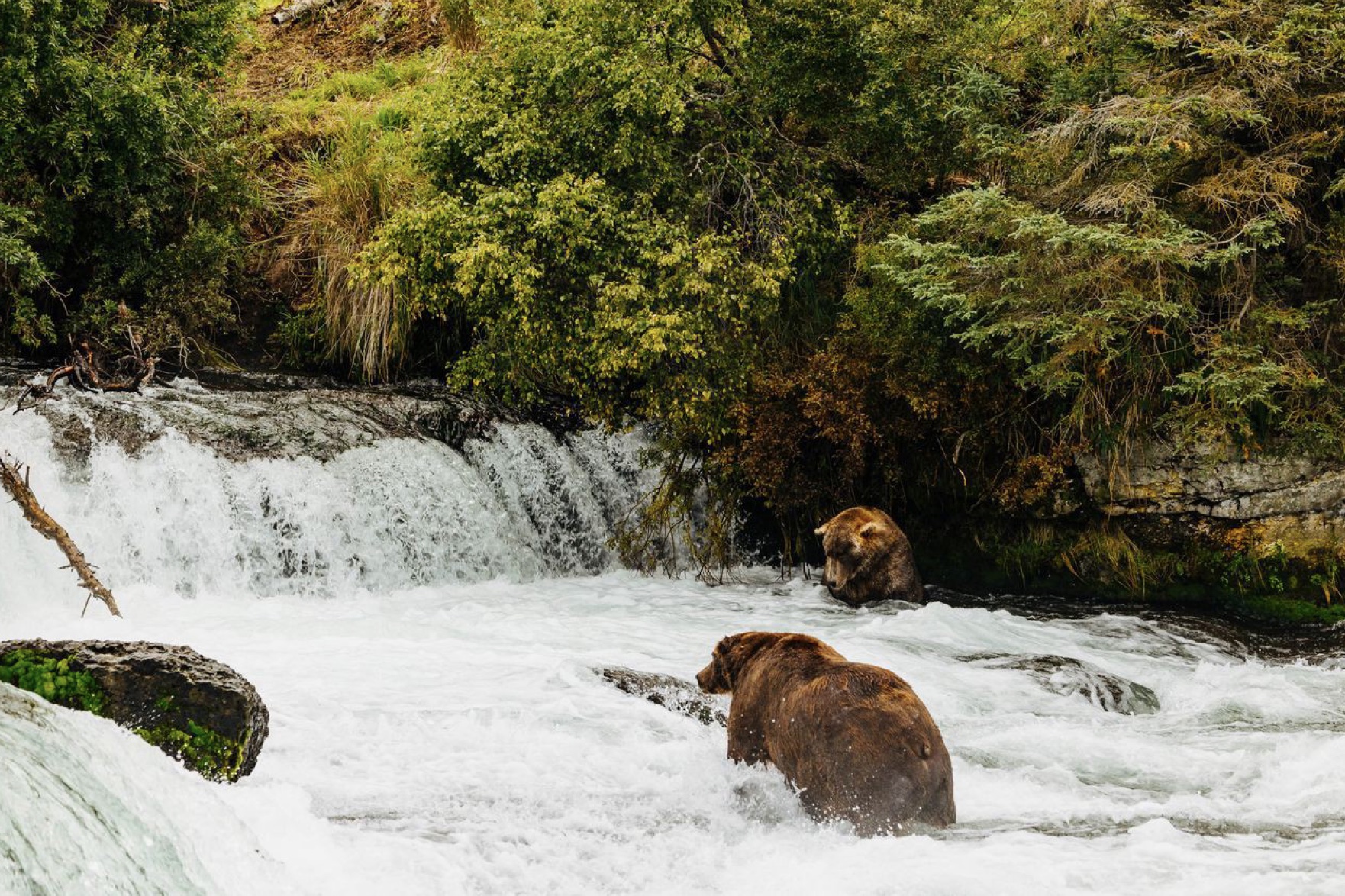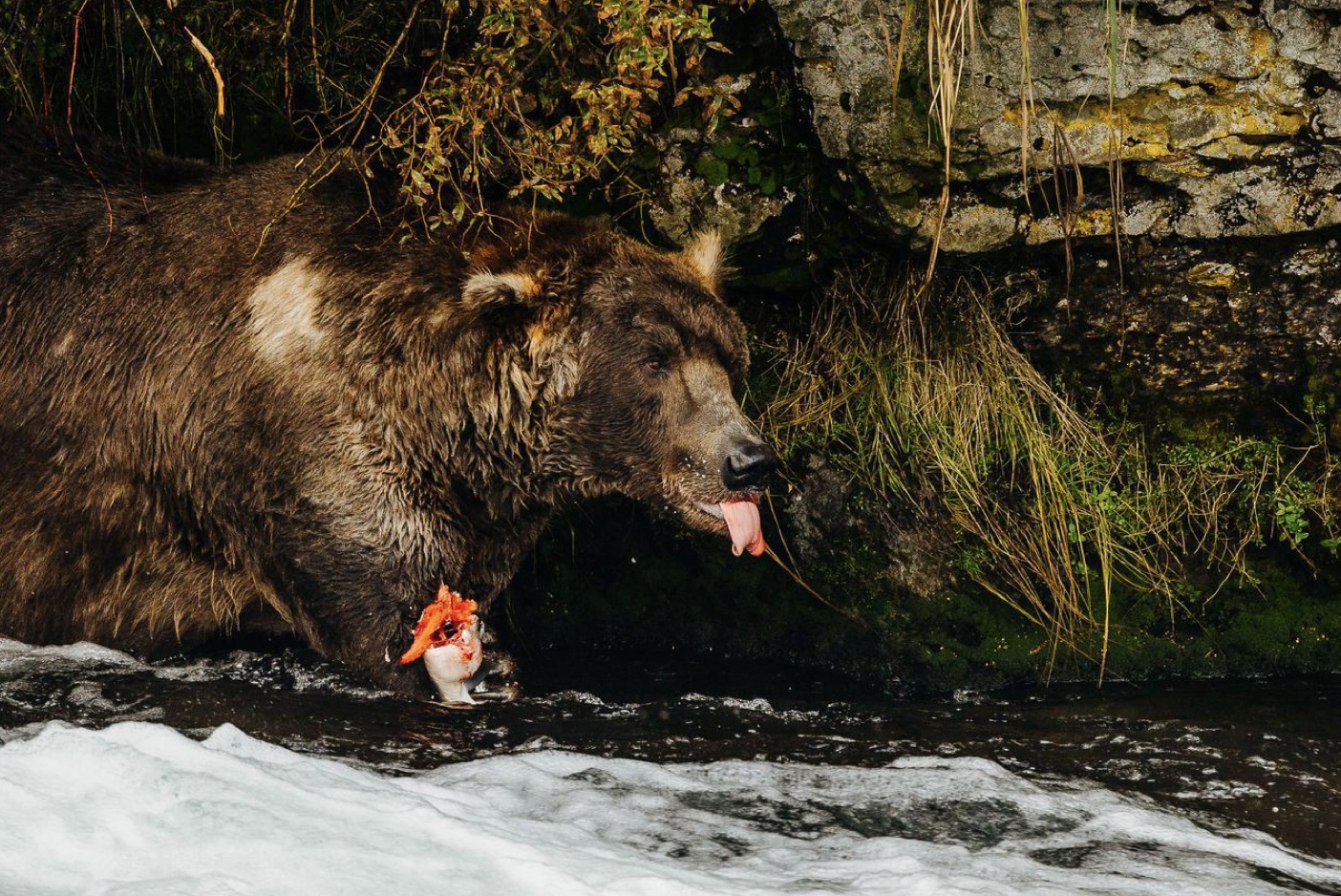Thousands Tune In to Watch Otis, Four-Time Champ of ‘Fat Bear Week,’ on Livecam

Otis the fat bear.
NOTE: this article was originally published to WSJ.com on September 20, 2022. It was written by Angela Owens.
A chubby favorite on the web feed from Katmai National Park, the brown bear gorges on salmon and eyes the competition
KATMAI NATIONAL PARK AND PRESERVE, Alaska—It’s a cool July afternoon some 300 miles southwest of Anchorage. Otis is standing knee deep in the glistening Brooks River, hoping to catch one of the many red salmon journeying upstream. A breeze tousles the blond hair by his ears as he gazes intently at the water rushing by his feet. He is completely unaware that at that moment, thousands of eyes are on him.
He may well be Alaska’s biggest celebrity, both in popularity and in circumference.
Also known by the number 480, Otis is a magnificently rotund brown bear and the reigning king of Fat Bear Week.
Fat Bear Week is a March Madness-style competition, organized by the National Park Service and Explore.org, in which thousands of people tune in via live webcams to vote for their favorite chunky bears at Brooks Falls in Katmai National Park. This year, the contest’s bracket will be announced Monday, with the voting for the fattest—or really just the most captivating—beginning Wednesday.
Otis won last year’s Fat Bear Week, in which nearly 800,000 votes were cast, according to the National Park Service. That made him a four-time champion.
Otis’s portly likeness now adorns T-shirts, coffee mugs, hats, blankets and, in the weeks leading up to the voting, digital campaign posters made by fans. From June to October, thousands of people around the world tune in to watch Otis and his peers catch fish, play and sleep on the 24/7 livecam run by Explore.org, a nature network and documentary film channel. Many viewers know Otis by name.

Otis, at rear, often sets up in the same spot near the water’s edge. Credit: ANGELA OWENS/THE WALL STREET JOURNAL
“I think for a lot of folks, there’s maybe a feeling of comfort when they see Otis,” said Mike Fitz, a naturalist with Explore.org and a former Katmai park ranger. “Like, ‘Hey, the world might suck in a lot of ways, but Otis is at the falls. He’s doing his thing. Maybe at least there’s one thing that’s right with the world today and I can enjoy this moment.’ ”
For Katmai’s brown bears, fat is a symbol of success and a testament to the health of the area. More than 2,000 brown bears live in the park, which is also home to the largest run of sockeye salmon left on the planet, according to the National Park Service.
Tension rises in early summer as fans eagerly check the bear cam, hoping that Otis survived another winter. Sure enough, in the last days of June this year, the king emerged.
“OTIS HAS ARRIVED. This is not a drill! You may now cry happy tears,” Explore announced, tweeting out a video that has been viewed some 32,000 times. In it, Otis, looking a bit groggy, emerges from behind brush and looks around.
“I screamed,” recalled Ponta Abadi, a 30-year-old public-health data analyst in Washington, D.C., who has been watching the bear cam for several years. “Otis is adorable, and I know that’s a weird thing to say about a bear that could take you out in one swipe. It’s just so peaceful to watch Otis.”
F ans are quick to identify Otis’s quirks. “He’s so cute with that floppy ear and the downturned face,” added Ms. Abadi. “Oh and his big belly, obviously the most important thing.”
Her mother, Maryam Abadi, is an even bigger fan. “Otis is my role model,” she said. “He’s patient, he’s skilled, he’s peaceful, he’s goal oriented.”
Maryam Abadi, who teaches business at a community college, said she watches the bear cam every day from her home in Portland. “My husband and I sit there and I’m like, ‘We can talk…but I need to have the bears in the background.’ ”
Of Otis, she added: “I look at him like, “You have no idea how many people love you.”
Now approaching his late 20s, Otis is cresting the upper range of a bear’s average lifespan. He isn’t the largest or most dominant bear at the falls. His teeth have seen better days, with two canines missing and others worn down. That makes him a bit of an underdog, if a 1,000-pound apex predator can be considered an underdog.
“It does really bother me when other bears come up to him and try to bully him out of his spot,” said Ms. Abadi. “Come on, respect your elders.”
Otis’s biggest competition in the fat bear contest in recent years has been a nearly 1,400-pounder known as 747, who often fishes just a few feet to his left. The giant is sometimes called “Bearforce One.”

Credit: ANGELA OWENS/THE WALL STREET JOURNAL

Otis is known for patiently waiting for fish to come to him. ‘He’s just laser focused on that salmon. ‘ Credit: ANGELA OWENS/THE WALL STREET JOURNAL
Bears can lose up to one-third of their body weight during hibernation, and thus need to gorge during the warmer months. Each sockeye salmon can provide up to 4,500 calories.
Otis makes the most of the short window. “He’s just laser focused on that salmon. He doesn’t fool around at all,” said Georgia Mathers, a 56-year-old teacher in Reno, Nev., who watches the bear cam every day. “He reminds me of my grandpa, who could fish for hours and nothing disturbs him.”
Many bears will fight for a position at the top of the falls, hoping to snatch salmon out of the air as they leap upstream. Some dunk their heads underwater, a method known as snorkeling. A few will belly-flop in the general direction of a fish, with varying degrees of success.
But not Otis. With the wisdom and patience that can only come with a quarter of a century of expert salmon slaying, he plops his round bottom at the base of the falls, and eventually, the fish come to him. The spot has been dubbed Otis’s “office.”
“Otis is perhaps the most patient bear, I think, I’ve ever seen,” said Mr. Fitz. “He knows how to make a living. That’s something that not all bears do so well.”
Mr. Fitz said he once counted, with the help of viewers, as Otis ate over 40 salmon in the span of about five hours. “I was really just awed by the capacity of his stomach,” he said.
—
For more posts like this, in your inbox weekly – sign up for the Restoring Diversity Newsletter
